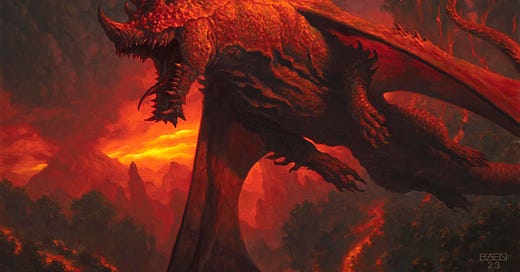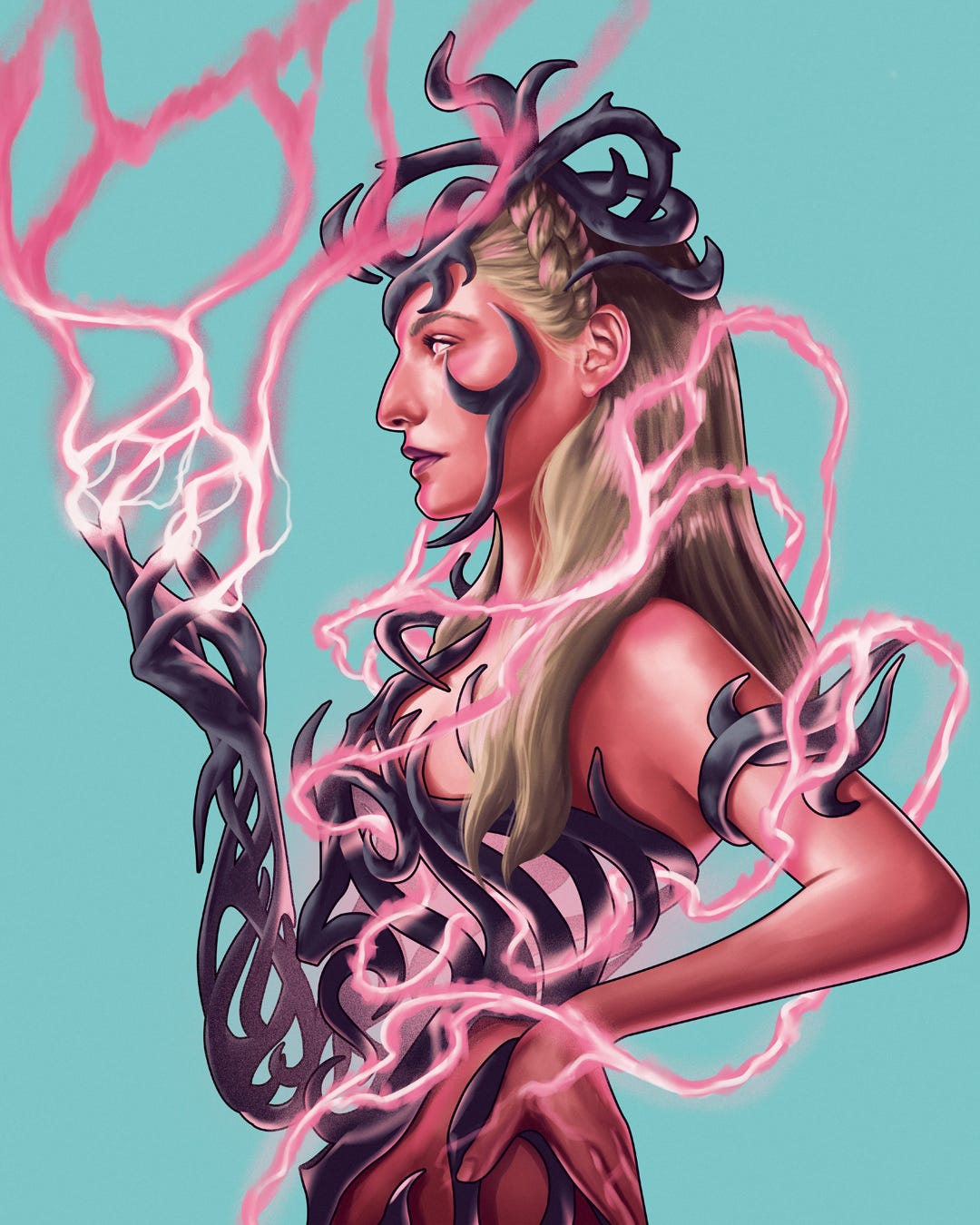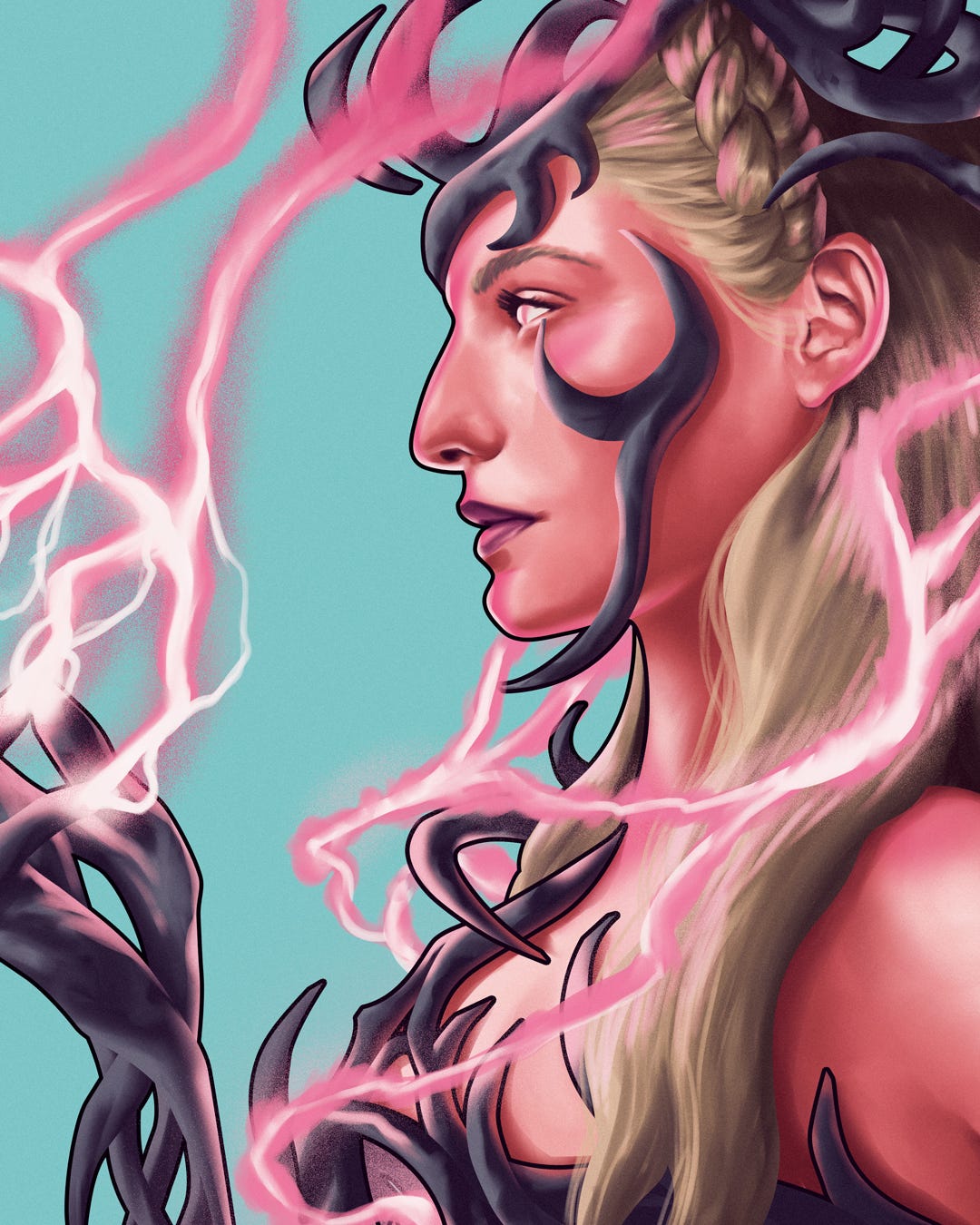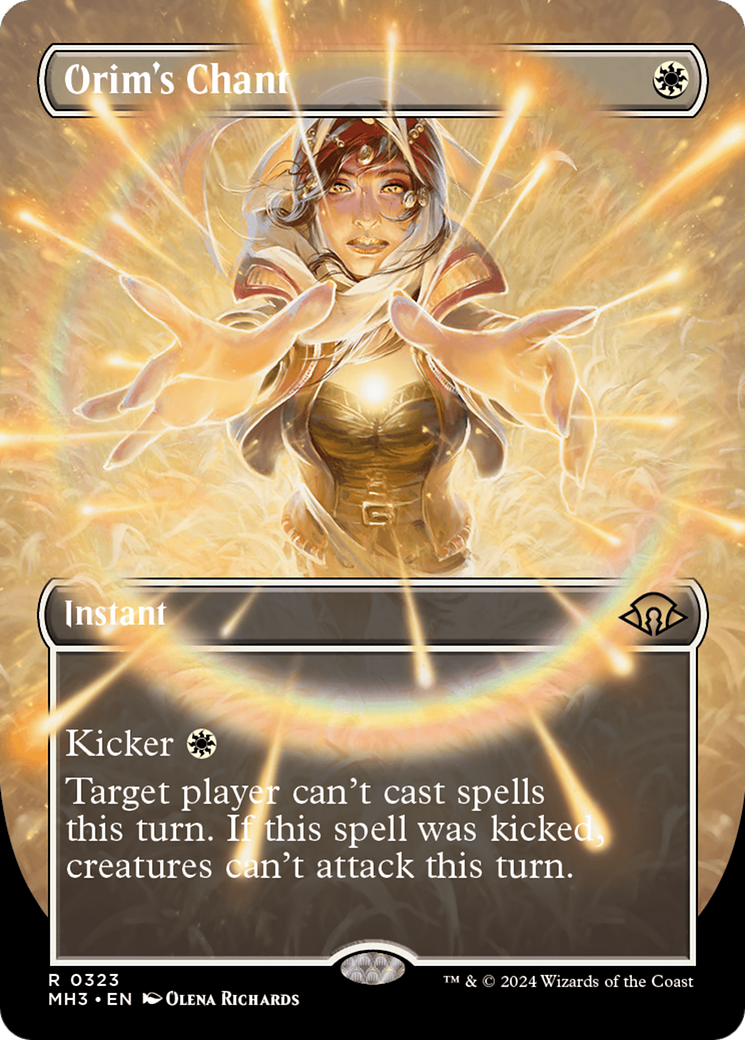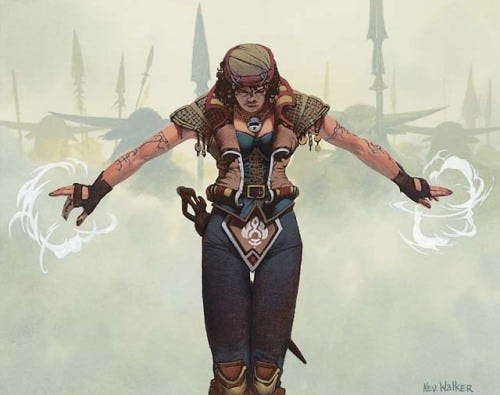Three Works: Art Highlights from Modern Horizons 3
New paintings for decade old cards steal the show, and showcase the incredible range of this new set
Sandwiched between April’s Outlaws of Thunder Junction and the next Universes Beyond release of Assassin’s Creed exists Magic: The Gathering's summer tentpole set: Modern Horizons 3. The Modern Horizons tradition injects new cards and exciting reprints directly into one of Magic’s most popular ways to play, and in doing so, creates the opportunity for hundreds of new pieces of art no both new and beloved cards of the game. This third iteration borrows treatments and styles from across recent premium set releases, and its led to some of the most exciting pieces of art in the set.
Because Modern Horizons doesn’t necessarily need a cohesive look and feel, nor is it delivering a defined narrative, there are opportunities for the cream to rise right to the top, and those pieces done exceptionally well stand out all the stronger. And that’s exactly what’s happened with the following Three Works:
Broodmate Tyrant by Chris Rahn
“Holy Sh*t Chris, that is an amazing painting in red values!” - Donato Giancola
When one first sees the new artwork by Chris Rahn for the reprinted Broodmate Tyrant, there is no denying it’s something special. But it might be hard to put a finger on exactly why. There is no shame in knowing something is quality without being able to explain it (I’ve been on that journey of discovery for half a decade), but fellow artist Donato Giancola spells it out succinctly above, drawn from in the comments of the auction where this work sold for $12,000 earlier this month. The painting is indeed a masterclass of using values of the color red, and in doing so, creates incredible depth and texture, which results in the remarkable viewing experience.
But what exactly does value mean, as an art-technical term? When I have any sort of question like this, I look to James Gurney, author of both Imaginative Realism and Color and Light (who now has a Substack as well). In the latter book, he defines value as “the lightness or darkness of a color note in relation to a gray scale; also often called luminance.” Right away we can start to see what that might mean: those lights and darks, but still red, are what’s creating that radiance and glow between the dragon and its appendages. It’s what makes this work so striking
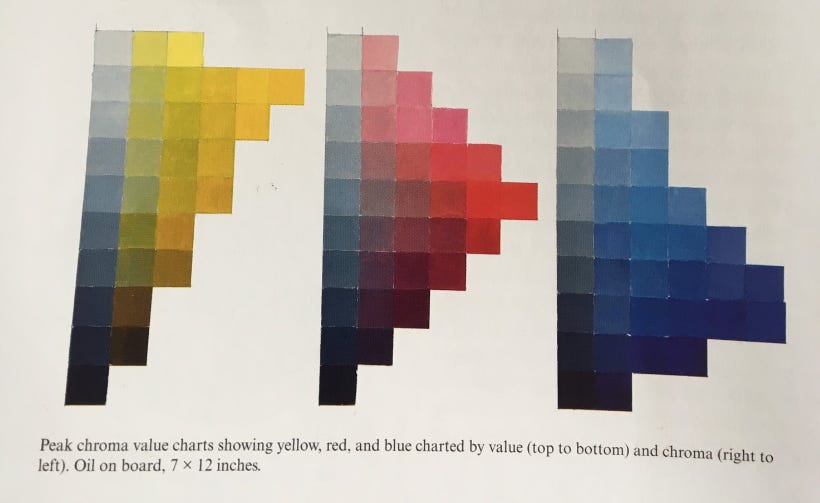
Looking at the red chroma chart from Gurney’s book above, and you can see right away the translations into the dragon below:
Digging deeper, we learn red’s maximum chroma is at a middle value: a literal balance between a white hot heat and the aftermath of a subtle, shadowed char. And all of a sudden we’ve bookended the color spectrum of this very painting. I’ve written about Chris Rahn’s paintings for as long as I’ve been writing about art, and even he can still surprise me and teach me something new. It’s tops in this collection of cards, and perhaps one of his best for Magic.
Breya, Etherium Shaper by Jack Hughes
Since the debut of the Borderless Profile treatment in Commander Masters one year ago, folks have been able to showcase their Commander in a completely unique style. These works feel more personal, as if you’re looking at a portrait that would hang in that character's home or office, and the solid sheet of color as a background makes them instantly recognizable on the play field. They are often quite eye-catching, but Breya, Etherium Shaper by Jack Hughes is particularly so.
While Hughes did not share the reference (as he sometimes does) or answer if this might be an actual person, it’s undoubtedly drawn from real-life reference, and that’s why she’s so compelling. Her nose, as Vorthos Mike referenced in the above tweet, is distinctive. Her pose and posture are powerful, and it’s a confidence that hasn’t been captured in the character before in any previous depiction . And yet she still retains those important design details; her arm is still hollow, and she’s still very much emblematic of her Esper origins. But while previous versions were clearly fiction, this profile picture makes her very, very real, and that’s something pretty special. Hughes is an expert at weaving the fantastic with the real-world, and has done it again here to noteworthy results.
Orim’s Chant by Olena Richards
We’ll finish with another debut card treatment from the same aforementioned Commander Masters set, the Borderless Frame Break. This style allowed, for the first time outside of Planeswalker cards and a few select others, elements of the artwork to overlap into the title box and text box. It’s a style properties like Pokémon TCG have been using to much success for quite some time, and as expected, has been a hit in Magic since its inception.
Lena Richards contributed four cards to Modern Horizons 3, all in this style, and each a striking work in its own right. But I want to focus on Orim’s Chant for a moment, because what she’s done here finished a story more than twenty years in the making. In the original artwork for the card, we see Orim head down and arms out, full focused mid-spell. Illustrated by the legendary Kev Walker, it has the look and feel of classic Magic that many of us grew up with in the Premodern era.
Lena has illustrated the is the second half of the story. If Walker was the deep breathe before the plunge, this is the exhale: it’s the resolution of the spell, and in a way emblematic of the game of today. It’s modern, using new designs in both borderless card and frame break aesthetics, and contemporizes a character of old, transporting her quite literally into Modern Magic.
End Step
These are but three paintings drawn from over 400 pieces of art that make up the new release of Modern Horizons 3. They show the variance that great artwork can have, and are living proof that not only does not all Magic art looks the same, but that it doesn’t need to to rise to the top.
While it’s a curious decision to smorgasbord the frame and art styles largely partitioned to Masters sets into the Modern Horizons series, the inclusion of these artworks do make this set stronger, and creates the excitement for those un-invested in it’s namesake format to want to participate.
Sometimes you just need a badass dragon, one of the game’s most powerful Commanders, and a tale as old as time to get the job done.

